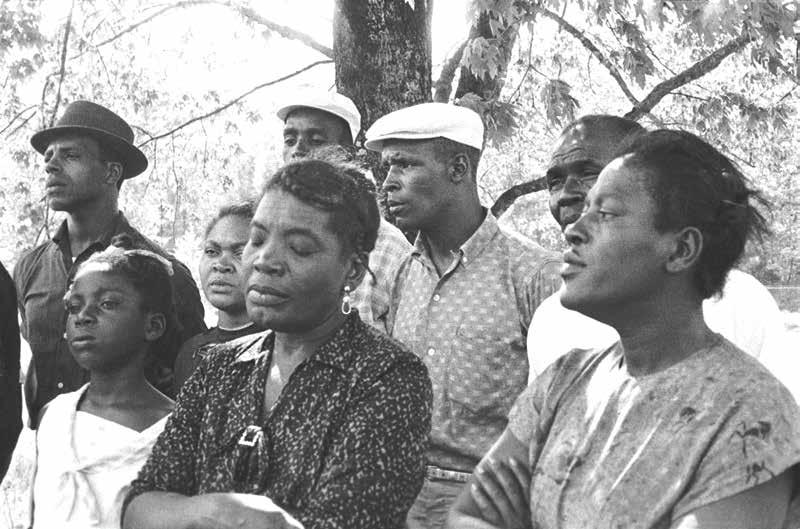
2 minute read
SSI Archives
Bessie Jones and the Georgia Sea Island Singers
Though born in the southwest region of the state, Bessie Jones became one of the most acclaimed interpreters of the African American musical heritage of the Georgia coast. As a child, Jones learned the “old ways,” including songs, stories and games, from her grandparents. Her grandfather, Jet Sampson, was born in Africa and was brought across the Atlantic as an enslaved worker in the 1840s.
Bessie Jones married twice; both of her husbands had connections to St. Simons Island. In 1933, she moved to the island with her second husband, George Jones. Bessie Jones met the Spiritual Singers of Coastal Georgia, an ensemble encouraged by Lydia Parrish and dedicated to the preservation of the music of their forebears. Impressed with her repertory and singing style, they invited her to join their group. She was one of the only mainlanders to be so honored. They performed at The Cloister and at the cabin behind Parrish’s home near Bloody Marsh. Musicologist Alan Lomax met Bessie Jones in 1959. He had returned to the coast to re-record singers he had encountered in 1935. Lomax recruited Bessie Jones, John and Peter Davis (uncles to Jones’ first husband), Emma Ramsey, and Mabel Hillery for a film about the music of Colonial Williamsburg. By 1963, with Lomax’s assistance, the group had organized as the Georgia Sea Island Singers. They appeared at Carnegie Hall and across the country at festivals, schools and special events. During the 1960s they participated in civil rights activities including the Sing for Freedom Workshop in Atlanta and the Poor Peoples March on Washington.
In January 1977, the Singers performed at President Jimmy Carter’s inauguration. Later that year, Jones, with the help of Frankie Quimby and folklorist-activist Bernice Johnson Reagon, put on the first Georgia Sea Island Festival celebrating African American music, crafts and food. After Bessie Jones died in 1984, the Georgia Sea Island Singers continued under the leadership of Frankie and Doug Quimby, performing at the Lillehammer Olympics and the G-8 Summit on Sea Island.
On Thursday, February 25, the Coastal Georgia Historical Society will host a tribute to Jones and the Singers at the A.W. Jones Heritage Center, when digital copies of the music, interviews and images collected by Alan Lomax will be donated to the Society’s archives by the Association for Cultural Equity and the American Folklife Center, Library of Congress. For information, call (912) 634-7090.
Among the digital images donated to the Society will be the one shown here of Bessie Jones (front row, center) and other singers, circa 1960.
Since its founding in 1965, the Coastal Georgia Historical Society’s archival collection has grown to over 15,000 historically important artifacts, documents and photographs.
Our monthly images on this page are from the vast archives of the Coastal Georgia Historical Society. The Society’s mission includes the “administration, restoration and maintenance of historic facilities and resources … preserved as a living part of the historical and cultural foundations of our coastal community.” Society facilities include the St. Simons Lighthouse and Museum, the A.W. Jones Heritage Center, and the Maritime Center (formerly the U.S. Coast Guard Station). To learn more about the Society, its diverse programs, and the benefits of Society membership, please call (912) 638.4666, or visit www.saintsimonslighthouse.org.











